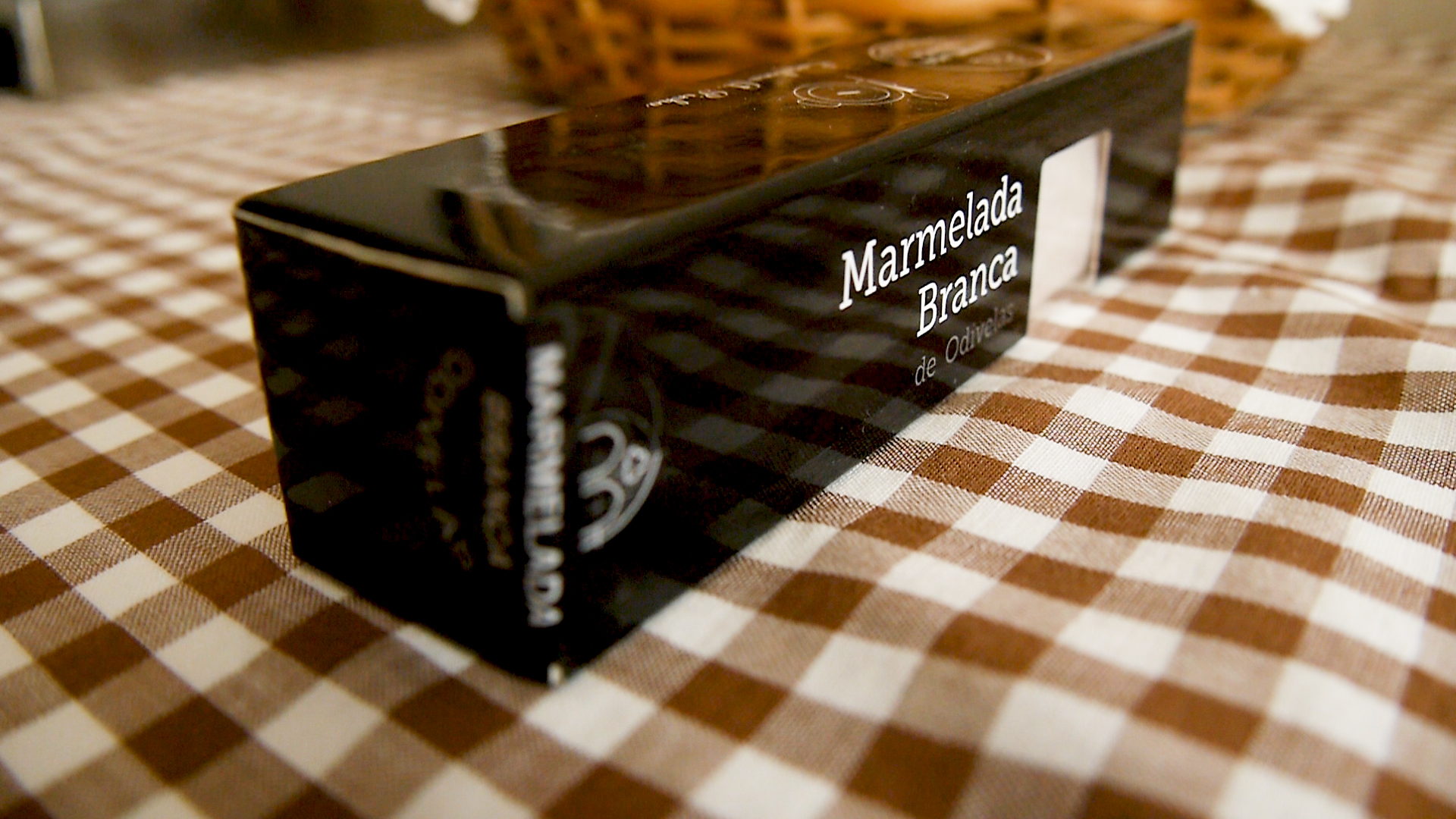A marmelada branca é confeccionada em vários lugares do país, com origem em tradições muitíssimo antigas, relacionadas com a preservação de frutos. No Mosteiro de Odivelas, desde há séculos, é feita uma marmelada branca que ficou famosa. As freiras deste mosteiro eram exímias doceiras e talvez tivessem outros atributos que ajudam a explicar a fama do doce. No séc. XIX, há notícia de que se juntavam no exterior do mosteiro poetas e cantores em busca de receber um olhar e um cubinho de marmelada, lançado da janela, por parte das freiras, que assim premiavam os talentos que mais lhes agradavam. É caso para dizer que assim se fazia marmelada.
Outra maneira de fazer a marmelada branca é assim: utilizam-se marmelos apanhados antes do seu pleno amadurecimento, cozinhados apenas em água, e assim se faz a polpa, sempre cuidando que o fruto não oxide. Se oxidar, a cor escurece. A verdadeira prova de saber fazer está em conseguir uma tonalidade muito clara. Num tacho de cobre, preferencialmente, mistura-se a polpa numa calda de açúcar pouco forte. Dispõe-se num tabuleiro raso, deixa-se arrefecer bem e corta-se em tiras grossas, ou em cubos. Depois de secar um bom bocado ao sol, a marmelada está pronta a comer, com ou sem acompanhamento.
***
“Marmelada branca” (white quince jam) is made in various parts of the country. It comes from a very old tradition concerning the preservation of fruits. In the Monastery of Odivelas, a famous “marmelada branca” was made for centuries. The nuns of this monastery were excellent cooks and they perhaps had other attributes that help explain the fame of this jam. In the nineteenth century, there are reports that poets and singers gathered outside the monastery expecting to exchange glances and receive small cubes of “marmelada” thrown out of the window by the nuns, who would thus reward the talents that pleased them most.
This is how you make “marmelada branca”: quinces must be harvested before they are fully mature, then they are cooked only in water until you get a pulp. Be careful not to let the quinces turn brown. If they do, the jam will become dark. The real demonstration of know-how in this case is to achieve a very clear color. In a preferably large copper pan mix the pulp in a low sugar syrup. Place in a shallow tray, allow it to cool and cut into thick strips or cubes. After drying a good bit in the sun, the “marmelada branca” is ready to eat, with or without accompaniment.
PUBLICIDADE




